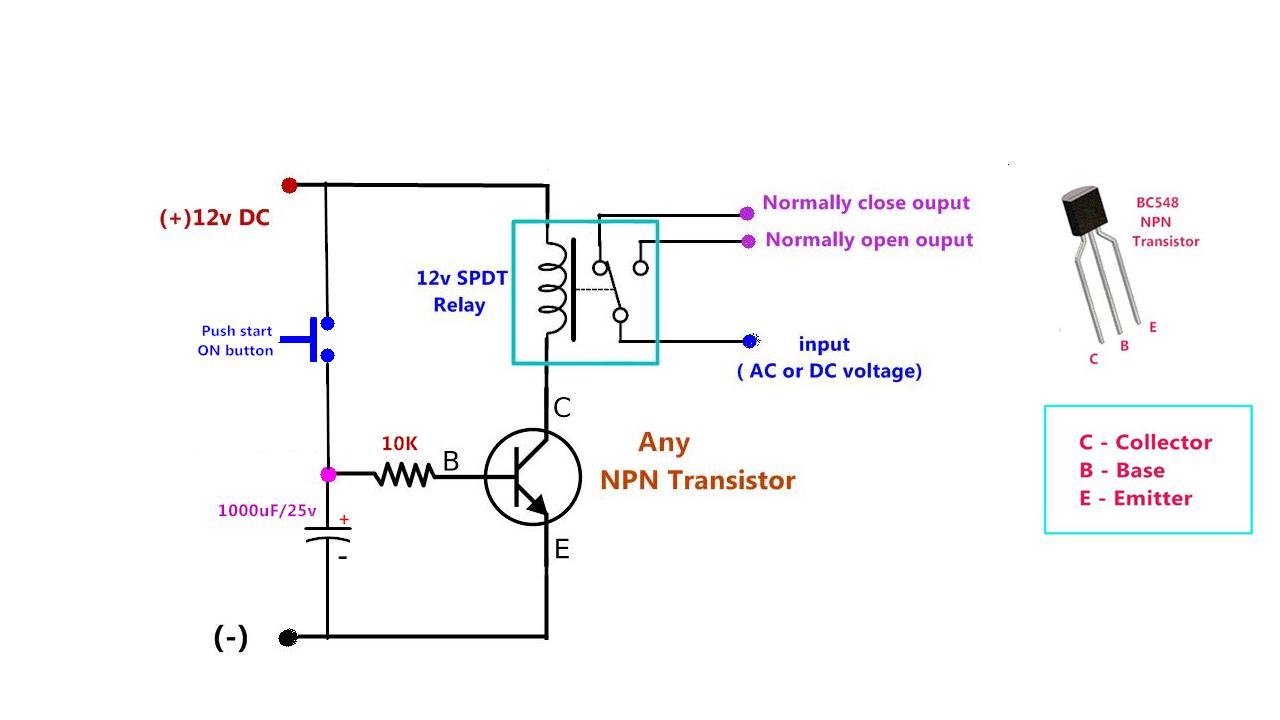

For this reason, there is usually a time-delay circuit arranged on each conveyor to give it adequate time to attain full belt speed before the next conveyor belt feeding it is started. In order to get large belts up to full speed, some time may be needed (especially if soft-start motor controls are used).

Time-delay relays help sequence these events for proper start-up of the engine. To properly start a large engine, certain auxiliary devices must be started first and allowed some brief time to stabilize (fuel pumps, pre-lubrication oil pumps) before the engine's starter motor is energized. Engine auto start control: Engines that are used to power emergency generators are often equipped with "auto start" controls that allow for automatic start-up if the main electric power fails.Flashing light control (time on, time off): two time-delay relays are used in conjunction with one another to provide a constant-frequency on/off pulsing of contacts for sending intermittent power to a lamp.Time-delay relays are very important for use in industrial control logic circuits. Because the delay occurs in the direction of coil de-energization, this type of contact is alternatively known as a normally-closed, off-delay: However, unlike the NCTO contact, the timing action occurs upon de-energization of the coil rather than upon energization. Like the NCTO contact, this type of contact is normally closed when the coil is un powered (de-energized), and opened by the application of power to the relay coil. Because the delay occurs in the direction of coil energization, this type of contact is alternatively known as a normally-closed, on-delay:įinally we have the normally-closed, timed-closed (NCTC) contact. In other words, the direction of the contact's motion (either to close or to open) is identical to a regular NC contact, but there is a delay in the opening direction. The contact is opened with the application of power to the relay coil, but only after the coil has been continuously powered for the specified amount of time. This type of contact is normally closed when the coil is un powered (de-energized). Next we have the normally-closed, timed-open (NCTO) contact. Because the delay occurs in the direction of coil de-energization, this type of contact is alternatively known as a normally-open, off-delay: However, unlike the NOTC contact, the timing action occurs upon de-energization of the coil rather than upon energization. Like the NOTC contact, this type of contact is normally open when the coil is un powered (de-energized), and closed by the application of power to the relay coil. Next we have the normally-open, timed-open (NOTO) contact.


The following is a timing diagram of this relay contact's operation: Because the delay occurs in the direction of coil energization, this type of contact is alternatively known as a normally-open, on-delay: In other words, the direction of the contact's motion (either to close or to open) is identical to a regular NO contact, but there is a delay in closing direction. Time-delay relays can be constructed to delay armature motion on coil energization, de-energization, or both. This addition gives the relay the property of time-delay actuation. Some relays are constructed with a kind of "shock absorber" mechanism attached to the armature which prevents immediate, full motion when the coil is either energized or de-energized. The contact is closed by the application of power to the relay coil, but only after the coil has been continuously powered for the specified amount of time. This type of contact is normally open when the coil is un powered (de-energized). First we have the normally-open, timed-closed (NOTC) contact. The following is a description of the four basic types of time-delay relay contacts. Time-delay relay contacts must be specified not only as either normally-open or normally-closed, but whether the delay operates in the direction of closing or in the direction of opening.


 0 kommentar(er)
0 kommentar(er)
